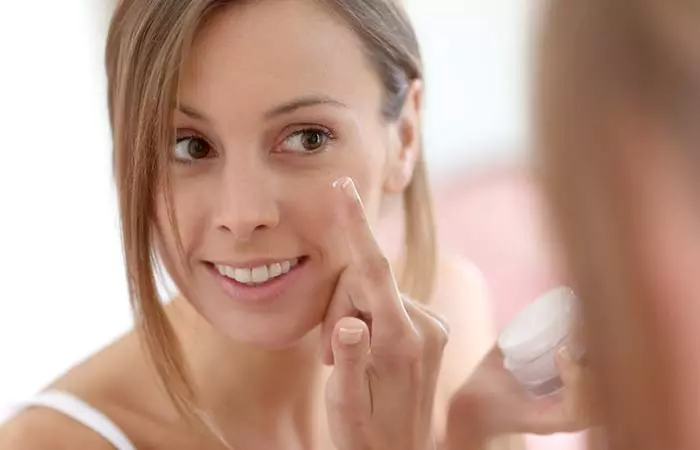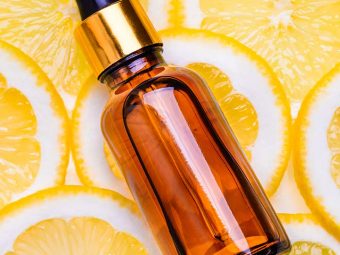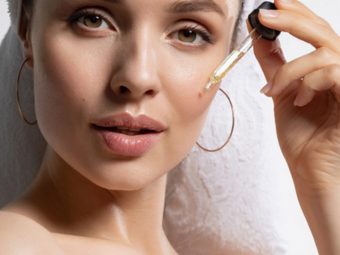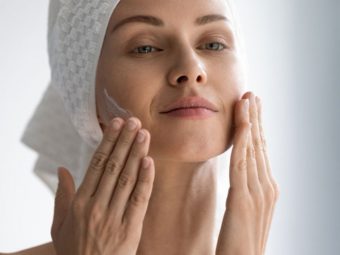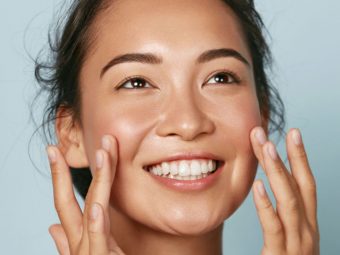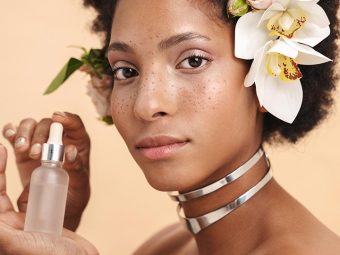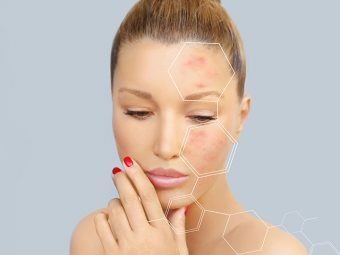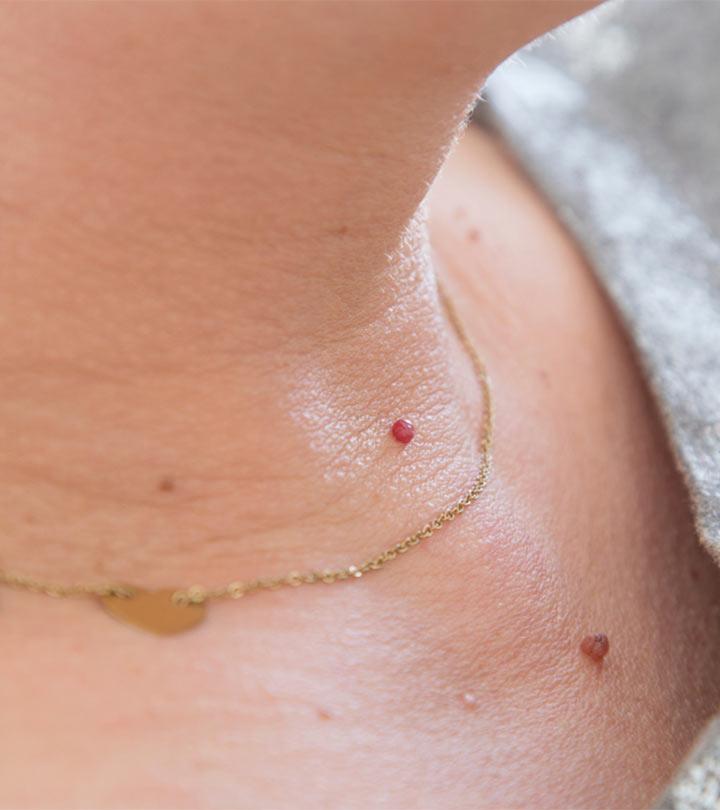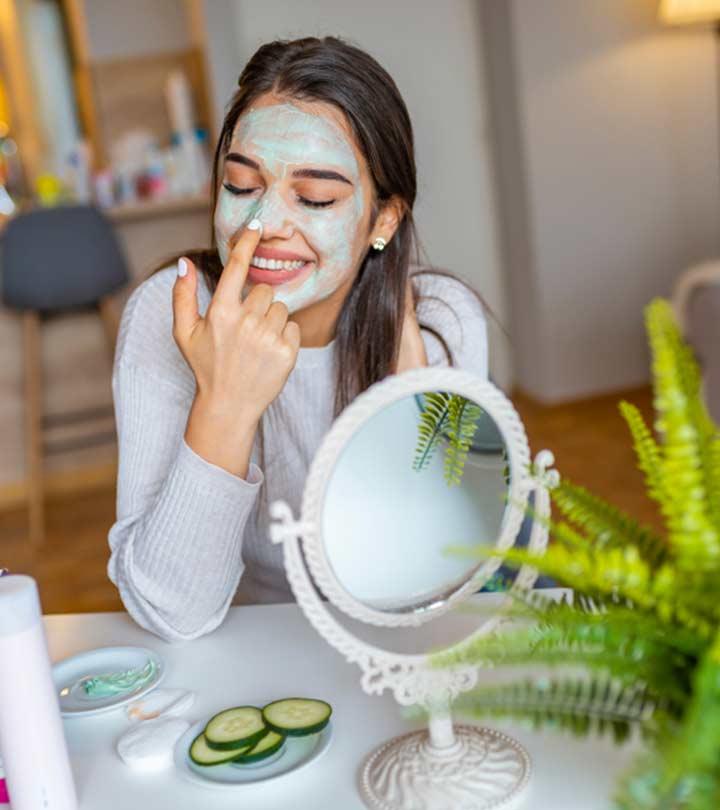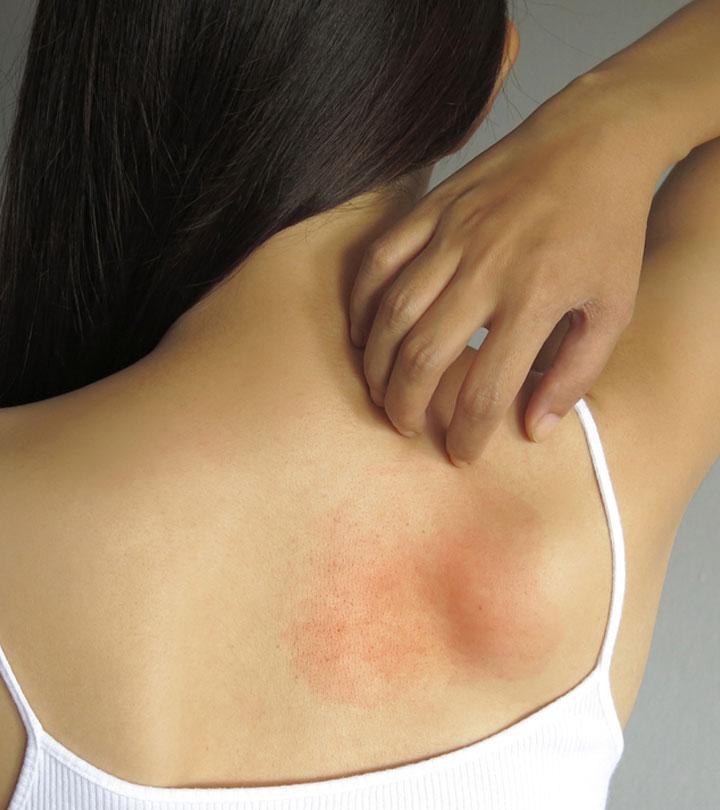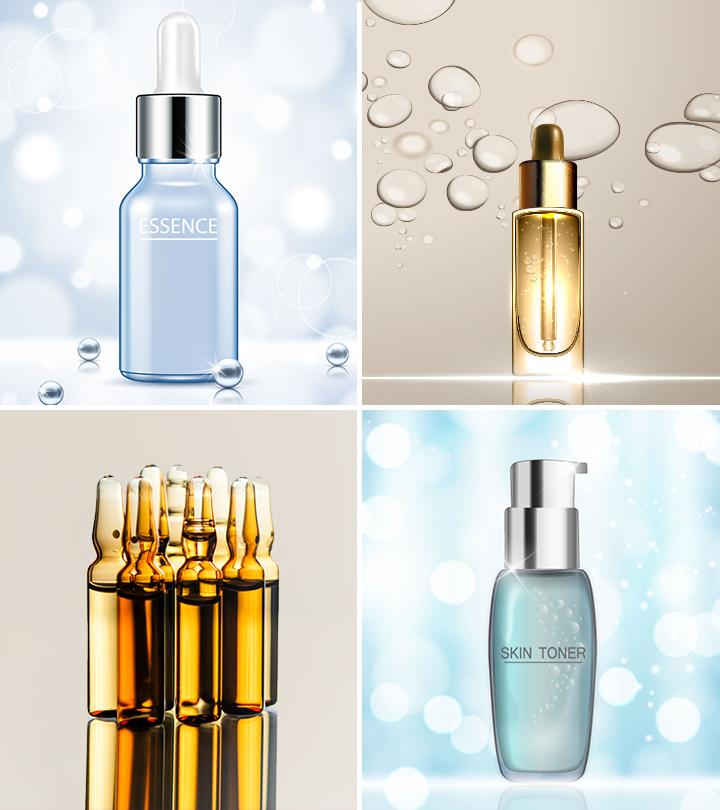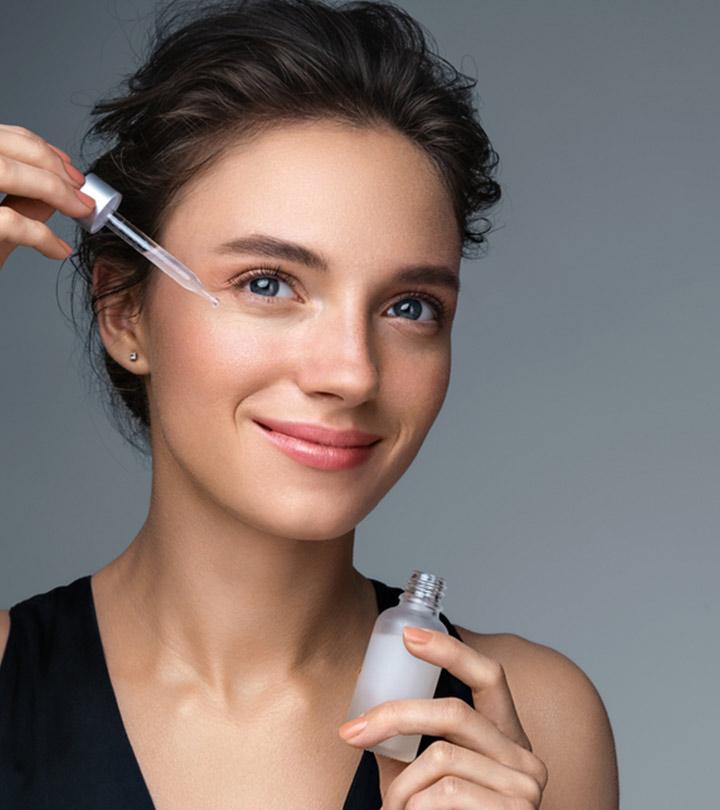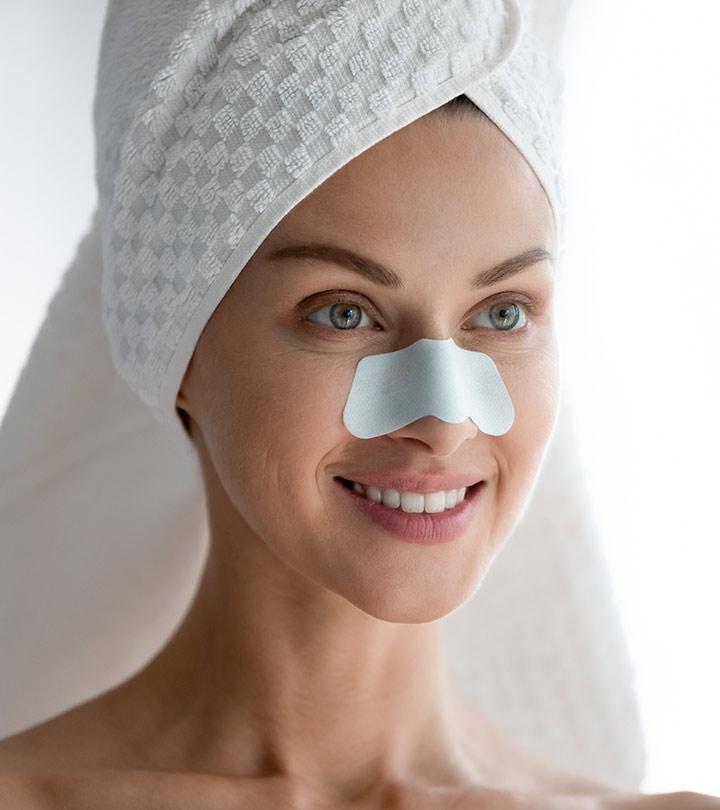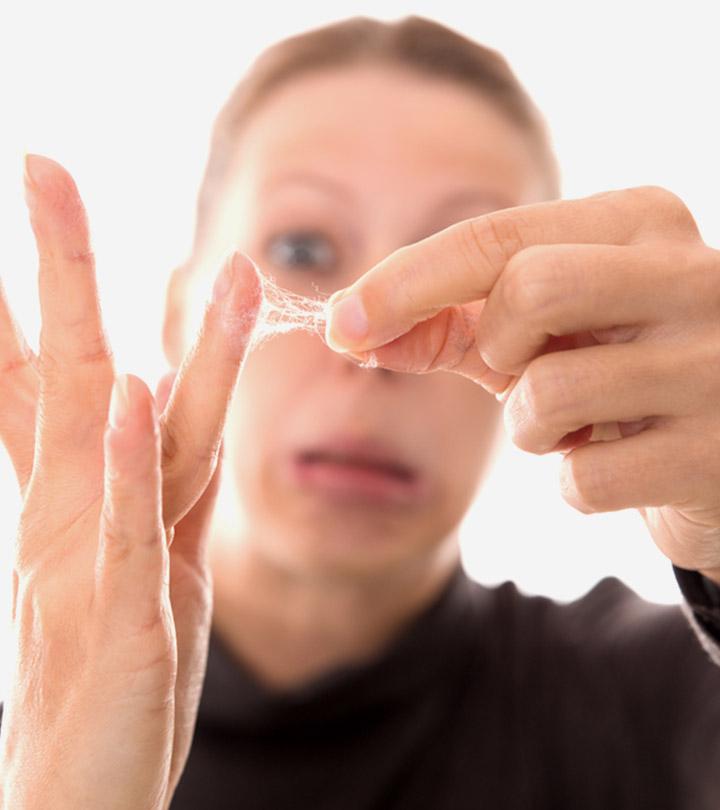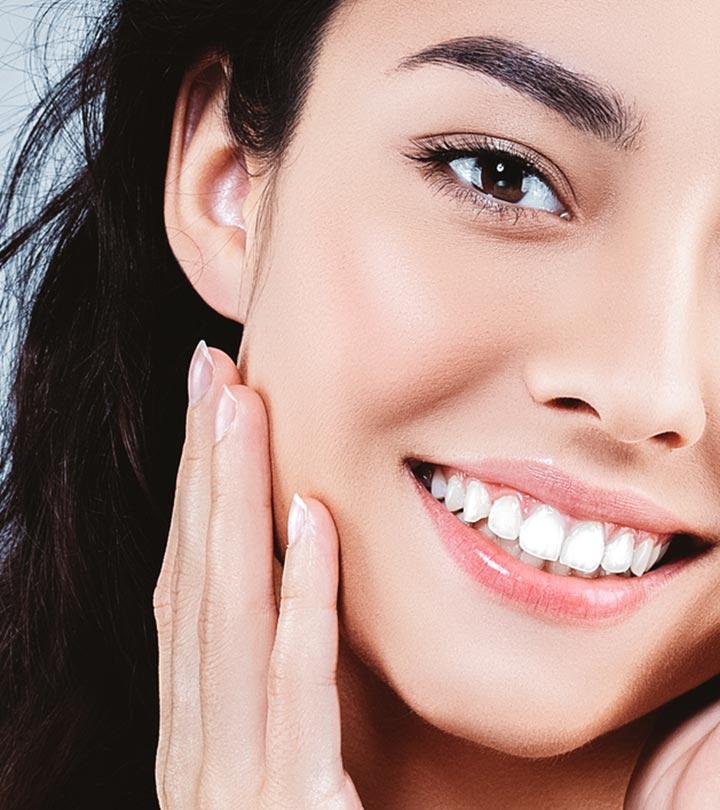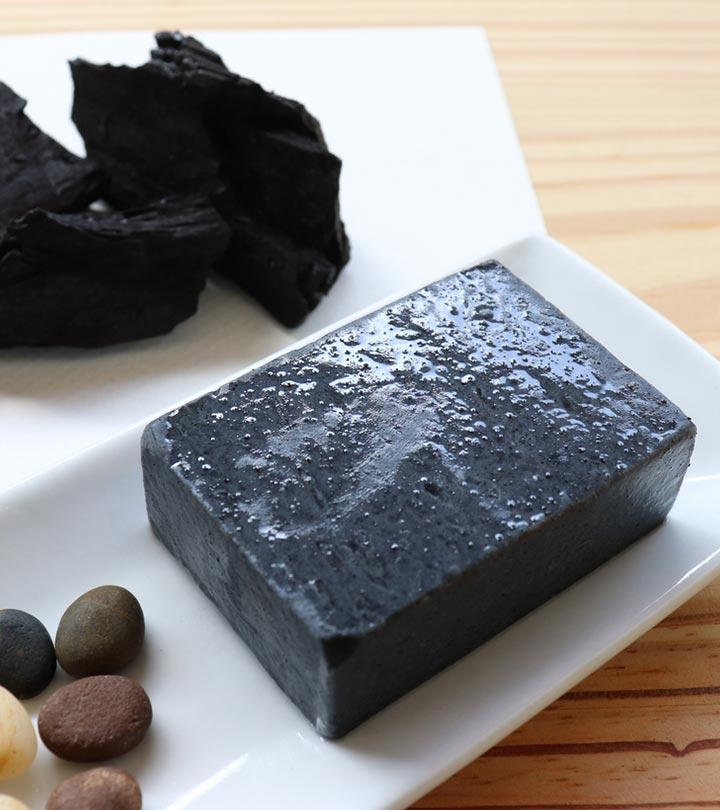Kojic Acid For Skin: Uses, Benefits, & Things To Keep In Mind
Understand how this ingredient can keep your skin clear and make it brighter and even-toned.

Image: Shutterstock
Kojic acid is a popular skin brightening agent with antimicrobial benefits. You can use kojic acid for skin-related issues like hyperpigmentation, uneven patches, and improving skin texture. Kojic acid’s benefits for the skin are plenty and it is widely used in skin care products. Read on to know more about it.
 Know Your Ingredient: Kojic Acid
Know Your Ingredient: Kojic AcidWhat Is It?
A chemical extracted from different kinds of fungi, including Aspergillus oryzae.
What Are Its Benefits?
It is used to reduce hyperpigmentation, reverse the signs of aging, and brighten the complexion.
Who Can Use It?
It is generally safe for all skin types except sensitive skin.
How Often?
The frequency of usage depends on several factors including concentration, skin condition, etc.
Caution
May cause contact dermatitis or photosensitivity. It is best to avoid it during pregnancy.
In This Article
What Is Kojic Acid?
Kojic acid is an agent that is extracted from various types of fungi, especially the different strains of Aspergillus (a kind of fungus). It was first discovered in 1907 and was extracted from a strain of Aspergillus called Aspergillus oryzae grown on steamed rice.
The name kojic acid is taken from the Japanese term “koji,” meaning “steamed rice.” It is widely used in kojic acid skincare products as a whitening and skin lightening agent (1). Let’s get to know more about it in detail.
 Trivia
TriviaUses Of Kojic Acid: How It Works
Kojic acid is a key ingredient in many skin brightening creams, gels, and serums. The Scientific Committees on Consumer Products (SCCP) approved using kojic acid in skin care products at a concentration of 1% or less (3).
You will come across kojic soap, cleanser, serums, creams, and lotions containing different concentrations of kojic acid. You need to use the product as per the instructions provided by the manufacturer. While you have to wash off soaps and cleansers immediately after application, you can leave kojic acid serum, cream, or lotion on overnight for better absorption. Let’s now understand how kojic acid functions.
Kojic acid brightens your skin by inhibiting melanin production. Melanin is the pigment that colors your skin, eyes, and hair. Overproduction of melanin often gives you dark spots and uneven skin tone. Your body produces melanin with the help of an amino acid called tyrosinei XAn amino acid that helps regulate melanin production. . Kojic acid inhibits the function of tyrosine, which, in turn, inhibits melanin production and improves skin radiance (4).
But, the question is, how safe is kojic acid for your skin?
Kojic Acid: Is It Safe For Skin? What Are The Benefits?
A study on six postmenopausal women tested the effect of kojic acid cream (containing 1% kojic acid). Their blood test revealed the presence of some amount of kojic acid in their plasma. However, the study suggested that since the absorption of kojic acid into the skin (and subsequently into the bloodstream) is prolonged, there isn’t any chance of adverse effects on humans (3).
Using products with kojic acid has several benefits.
1. It Reduces Hyperpigmentation
Excessive sun exposure may cause hyperpigmentation, dark spots, and freckles on your skin. Applying kojic acid on your face can help lighten the spots and patches, giving you clear skin. It can also be used for mild exfoliation and is said to remove dead skin cells and have an overall whitening effect on your skin. Various dermatology experts claim that can use kojic acid for melasmai XA condition causing dark patches on the skin due to hormonal changes during pregnancy. treatment successfully without irritating your skin (4).
A beauty blogger from the Philippines talks about how kojic acid is a popular skin-brightening ingredient in Philippine skin care routines. “I know a lot of friends who are loyal users of Kojic Acid; I myself also prefer Kojic Acid soap on my armpits and knees for no-fuss exfoliation and to maintain the evenness on those areas (i),” she says.
2. It Has Anti-Aging Effects
Now that sounds exciting! Kojic acid creams and other cosmeceutical products not only reverse sun damage but also reduce wrinkles and signs of aging. Kojic acid acts as an antioxidant and also inhibits the action of tyrosinase, which is responsible for melanin production and the skin aging process (5).
3. It Has Antibacterial Properties
Although the antibacterial properties of kojic acid are not extraordinarily powerful, it is pretty effective against several strains of bacteria and can inhibit their growth even when used in small dilutions (3).
4. It Has Antifungal Properties
Kojic acid also has antifungal properties. It was found to have an inhibitory effect on certain strains of fungi and is extremely helpful in treating yeast infections, such as athlete’s foot or ringworm and candidiasisi XA fungal infection caused by a fungus called Candida. . Regular application of kojic acid on the skin helps prevent bacterial and fungal skin infections (6).
Though these are some of the important benefits of kojic acid, it is popular for its skin-lightening effect. But can it help lighten skin permanently? Learn more in the next section.
Can Kojic Acid Permanently Lighten Skin?
Kojic acid is widely known as a skin-lightening agent and is commonly found in products designed to reduce hyperpigmentation or dark patches on the skin. However, it cannot lighten your natural skin tone or permanently lighten your skin. It may only help lighten the pigmentation and dark patches caused by environmental and other factors. It works by inhibiting the production of a pigment called tyrosinase (4).
Although kojic acid is extremely safe for skin, few people may experience a few side effects.
Are There Any Side Effects Of Kojic Acid?
The most common side effects of kojic acid are:
1. It May Cause Contact Dermatitis
People with sensitive skin are prone to contact dermatitisi XAn umbrella term for conditions that irritate the skin and cause dryness, flaking, and itching. . According to a review published by the American Contact Dermatitis Society, a patient developed contact dermatitis after using a cream containing kojic acid (7).
2. It Might Make Your Skin Sensitive To Sun Rays
Kojic acid inhibits the production of melanin, a pigment that is also responsible for saving your skin from sunburn and other side effects of harsh sun rays. When melanin production is compromised, your skin becomes susceptible to sunburn. Hence, it is advisable to apply sunscreen after the use of kojic acid before stepping out into the sun.
To avoid any side effects, it is always better to consult a dermatologist before using kojic acid. There are certain things that you should keep in mind while using kojic acid.
Things To Keep In Mind Before Using Kojic Acid
- Kojic acid is helpful for people who have skin spots, hyperpigmentation, acne scars, and dark patches. However, people who live with particular skin conditions should avoid using kojic acid. Also, those suffering from allergies should consult a doctor before using it. Moisturizing after using a kojic acid product may help prevent skin irritation and dryness.
- When using kojic acid products, always stick to the instructions provided by the manufacturer. If your doctor has prescribed any product, ask for usage directions and follow them.
- If you notice any rash or changes in your skin after using kojic acid products, do not ignore it. Stop using it and visit the doctor immediately.
- Never use kojic acid on broken skin.
The desired result may vary from person to person, depending on the skin type and the severity of the condition. Some may get results in a few weeks while a few others may take months to show results. Try to use kojic acid only for a brief period – until the condition is healed or you get the desired results.
 Did You Know?
Did You Know?Infographic: Other Ingredients That Go Well With Kojic Acid
Kojic acid is a skin-brightening ingredient that helps solve several skin issues. It helps reduce hyperpigmentation, prevents bacterial and fungal infections, and helps reverse sun damage. Though kojic acid works alone, there are a few ingredients that you can mix with it for the best results.
Check out the infographic below to know the ingredients that go well with kojic acid. Illustration: StyleCraze Design Team
Takeaway
Kojic acid is commonly used in skincare products as a whitening agent. Regularly using kojic acid for your skin can reduce dark spots and blemishes, inhibit the growth of bacteria and fungi, and improve your overall skin texture. Carefully follow the instructions on the prescribed product and make sure you do not apply kojic acid to wounded skin. Kojic acid is mostly safe for usage, few people may experience side effects such as contact dermatitis and increased sensitivity to the sun. If you develop an allergic reaction after using any kojic acid products, consult a doctor immediately.
Frequently Asked Questions
How long does it take for kojic acid to lighten skin?
It takes more than a month of consistent use for kojic acid to lighten the skin. However, you will start seeing the changes within the first 2 weeks.
Can I use kojic acid daily?
Yes, you may use kojic acid daily if your skin is not sensitive. If you have sensitive skin, use it only once or twice per week.
Can kojic acid remove pimples?
The antibacterial properties of kojic acid may help reduce pimples.
Can I use vitamin C and kojic acid together?
If you have sensitive skin, it is best not to use vitamin C and kojic acid together. Otherwise, there is no issue with using them together. However, always do a patch test before applying them.
Which is better – kojic acid or hydroquinone?
Both are equally effective skin care ingredients. If you want to use a gentle ingredient, go for kojic acid. Switch to hydroquinone if you do not see the desired results.
Can kojic acid lighten lips?
Yes, you can use kojic acid to treat lip hyperpigmentation.
Key Takeaways
- Kojic acid is a substance that is obtained from Aspergillus fungi.
- Using kojic acid may help reduce hyperpigmentation and reduce signs of aging,
- While kojic acid is considered safe for use, some people may develop contact dermatitis.
- Avoid using kojic acid on broken skin and follow your doctor’s instructions carefully for safe usage.

Image: Dall·E/StyleCraze Design Team
Experience the transformative power of kojic acid in just one week! Watch this video to discover the incredible results of this skin-brightening and healing ingredient.
Personal Experience: Source
StyleCraze's articles are interwoven with authentic personal narratives that provide depth and resonance to our content. Below are the sources of the personal accounts referenced in this article.
i. Why Is Kojic Acid The Better Lightening Ingredient?https://thebeautyjunkee.blogspot.com/2016/07/why-is-kojic-acid-better-lightening.html
References
Articles on StyleCraze are backed by verified information from peer-reviewed and academic research papers, reputed organizations, research institutions, and medical associations to ensure accuracy and relevance. Read our editorial policy to learn more.
- “Final Report of The Safety Assessment..” International Journal of Toxicology, Sage Publication
- “Data of World Kojic acid imports” Volza Grow Global
- “Opinion On Kojic Acid”, SCCP, Directorate-General for Health & Consumers, European Commission
- “The Comparative Study of Hydroquinone and Kojic Acid..”, Journal of Dental and Medical Sciences, IOSR Journals
- “Depigmenting Effect of Kojic Acid Esters..”, Journal of Biomedicine and Biotechnology, NCBI
- “Antimicrobial Activity of Kojic Acid..”, Asian Pacific Journal of Tropical Medicine
- “Allergic Contact Dermatitis..”, Dermatitis, Wolters Kluwer
- “R&D Report, Skin Lightening Ingredient, Kojic Acid”, DERMED Technology.





